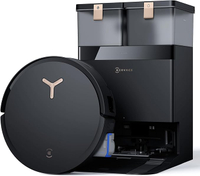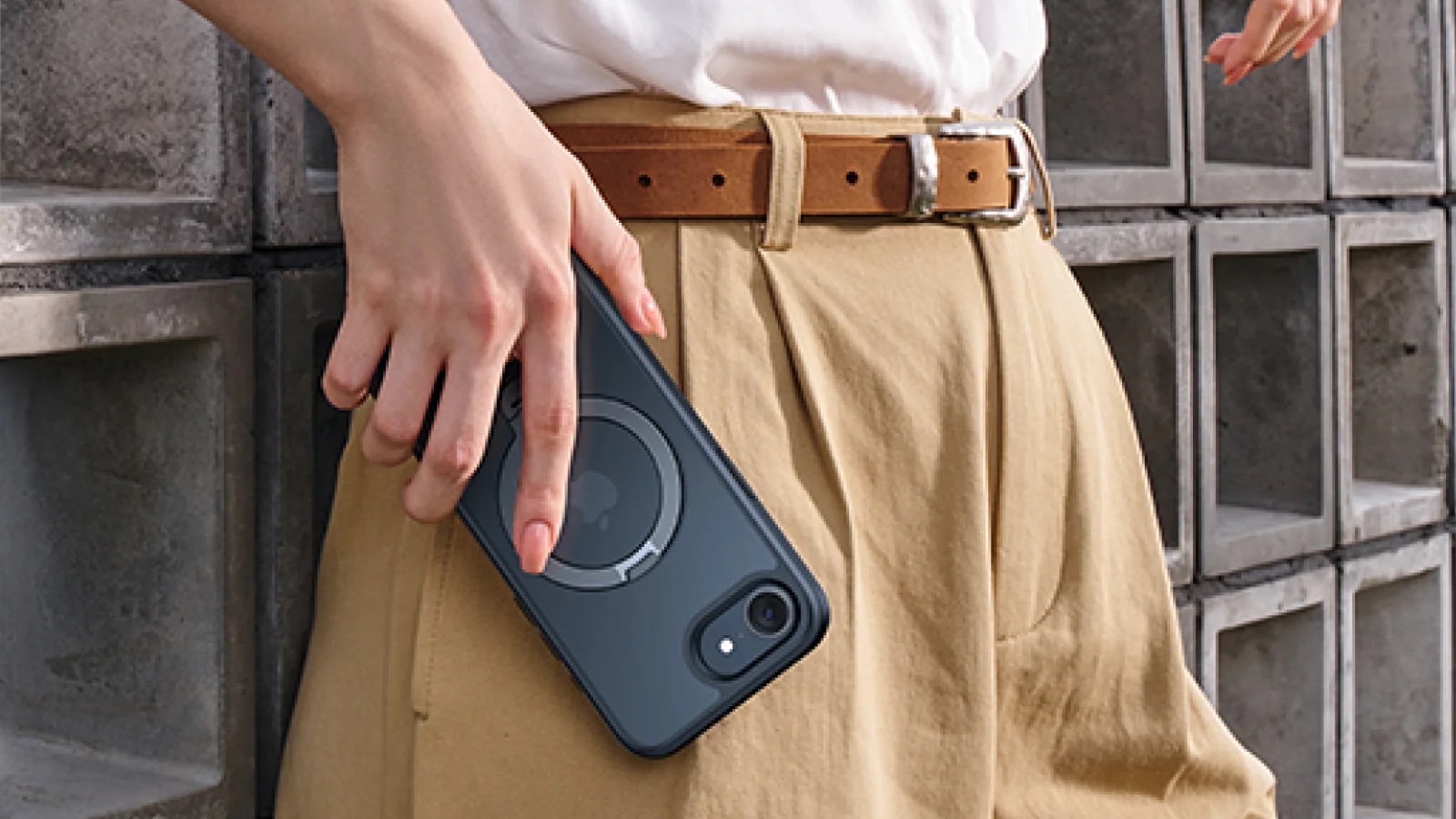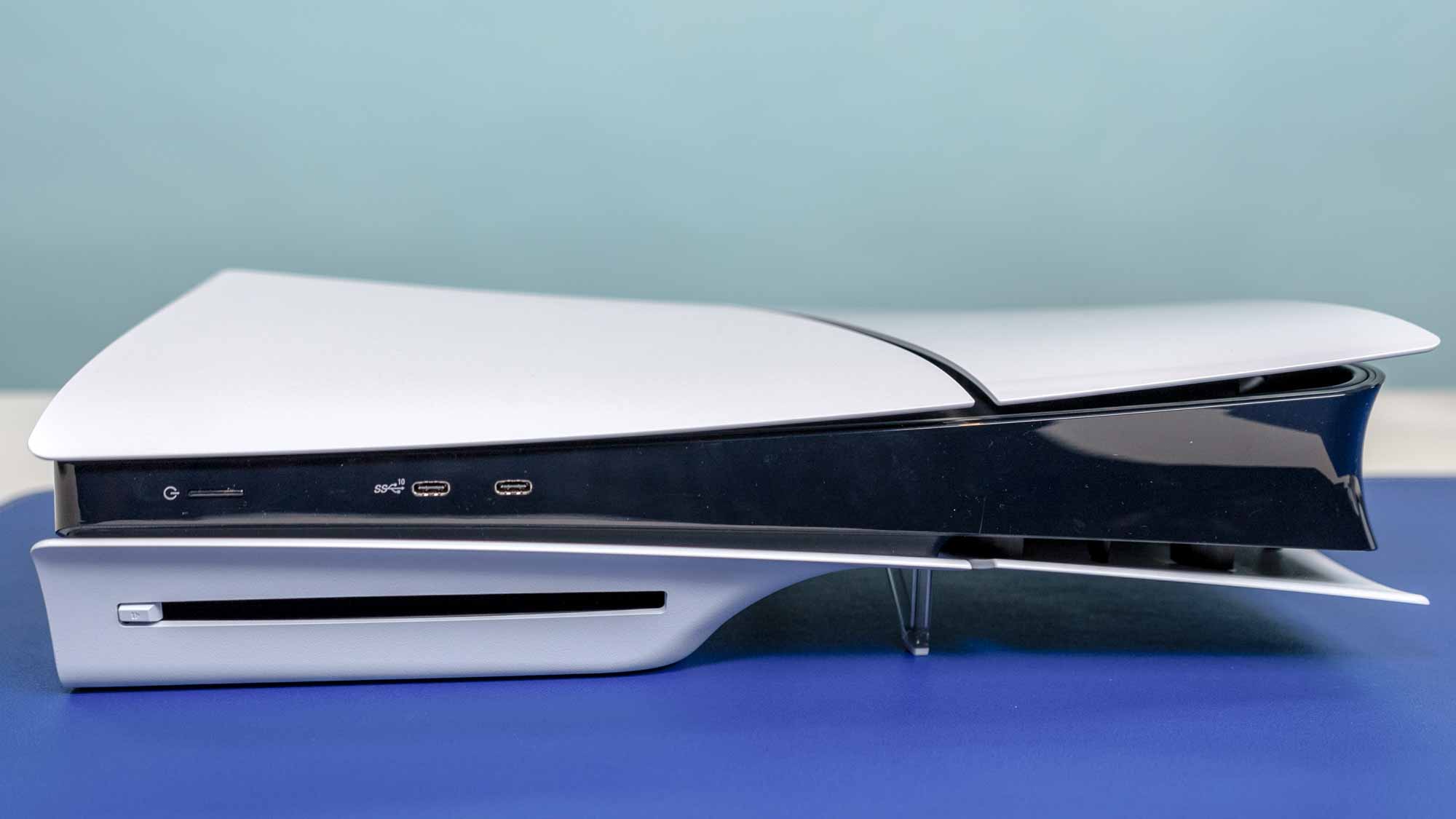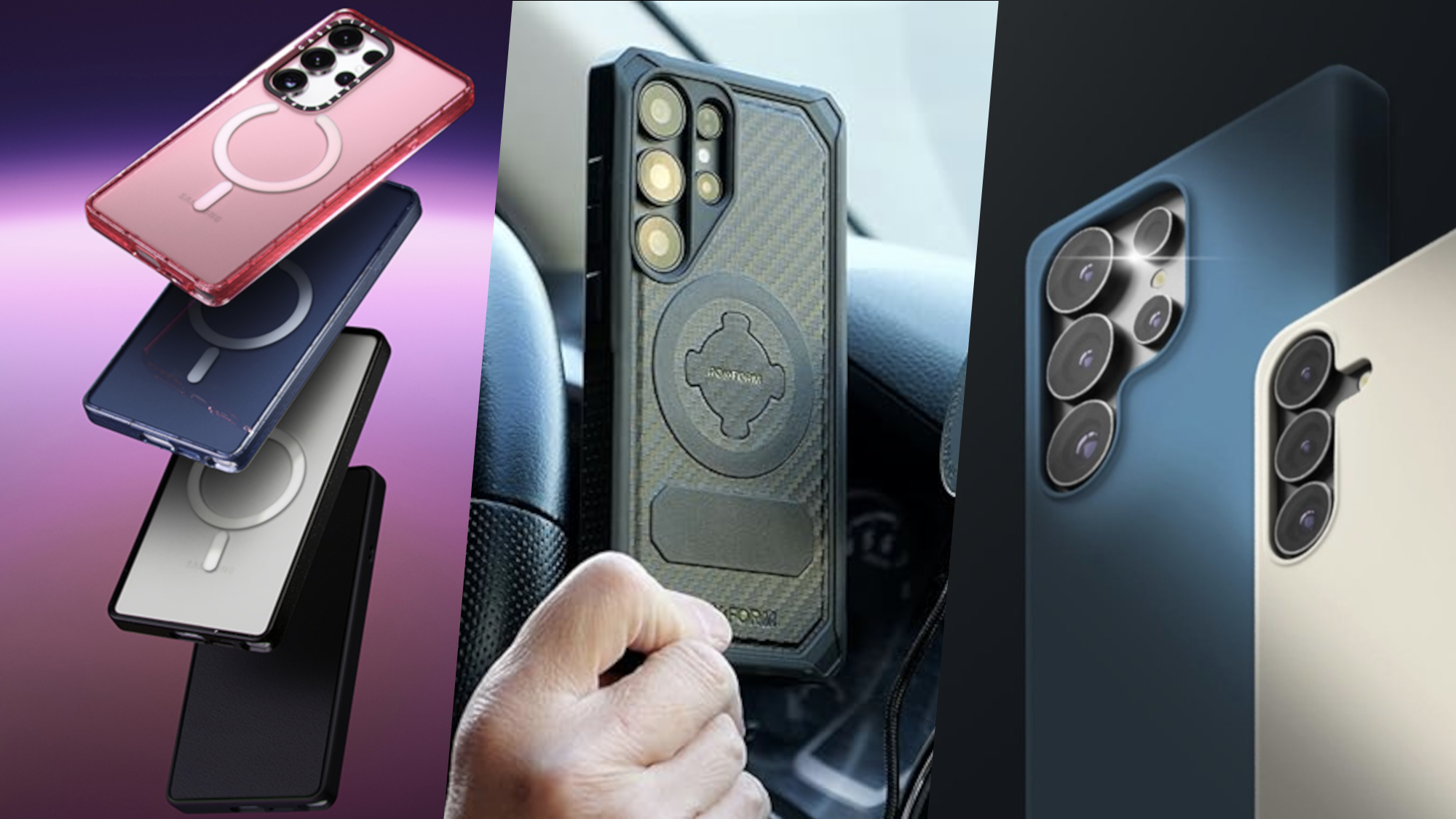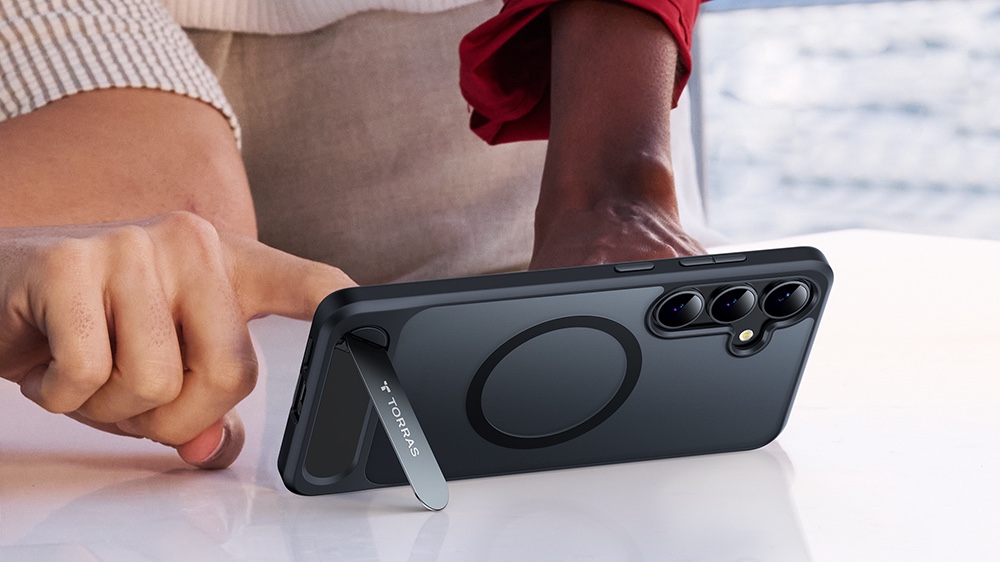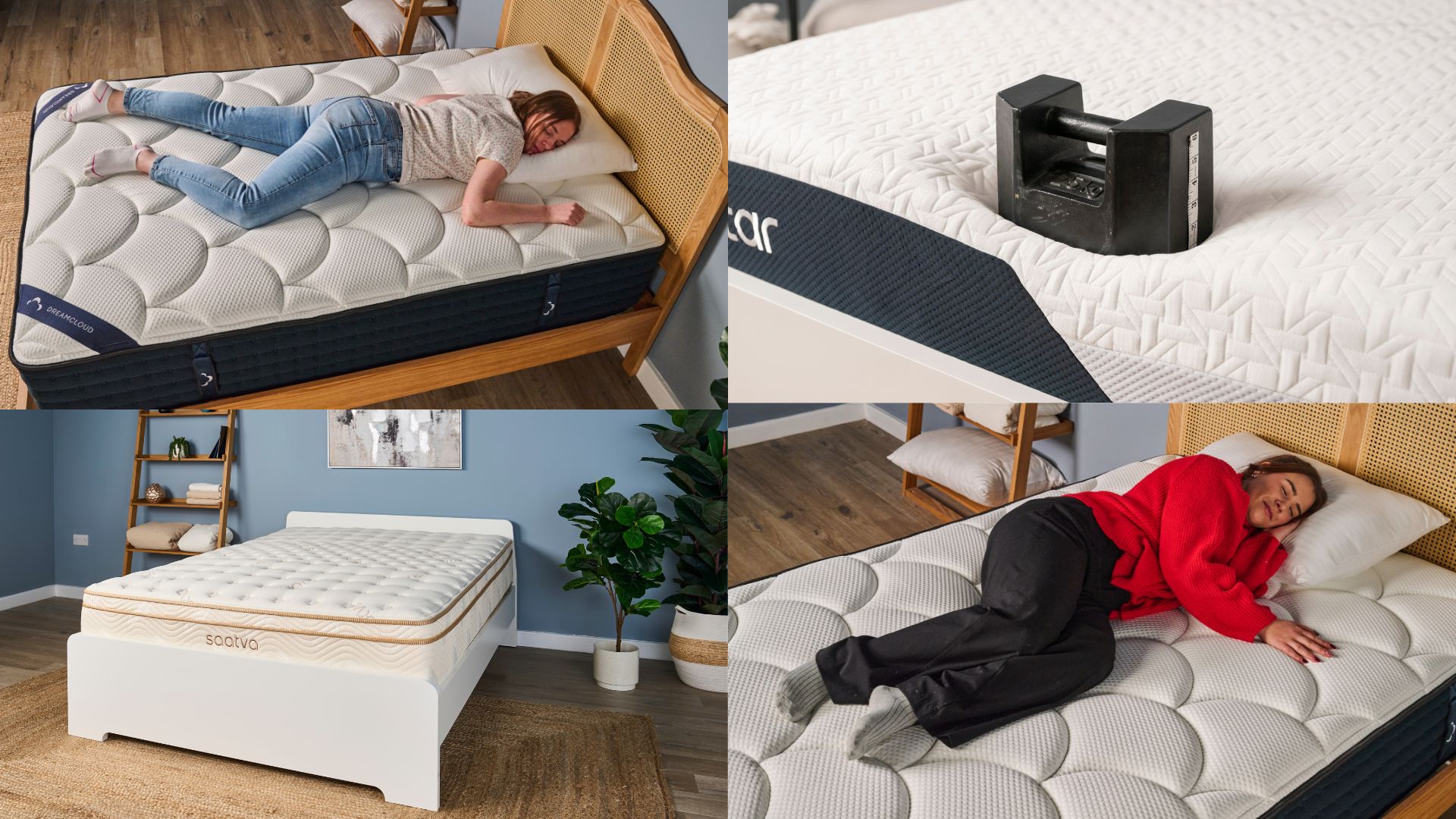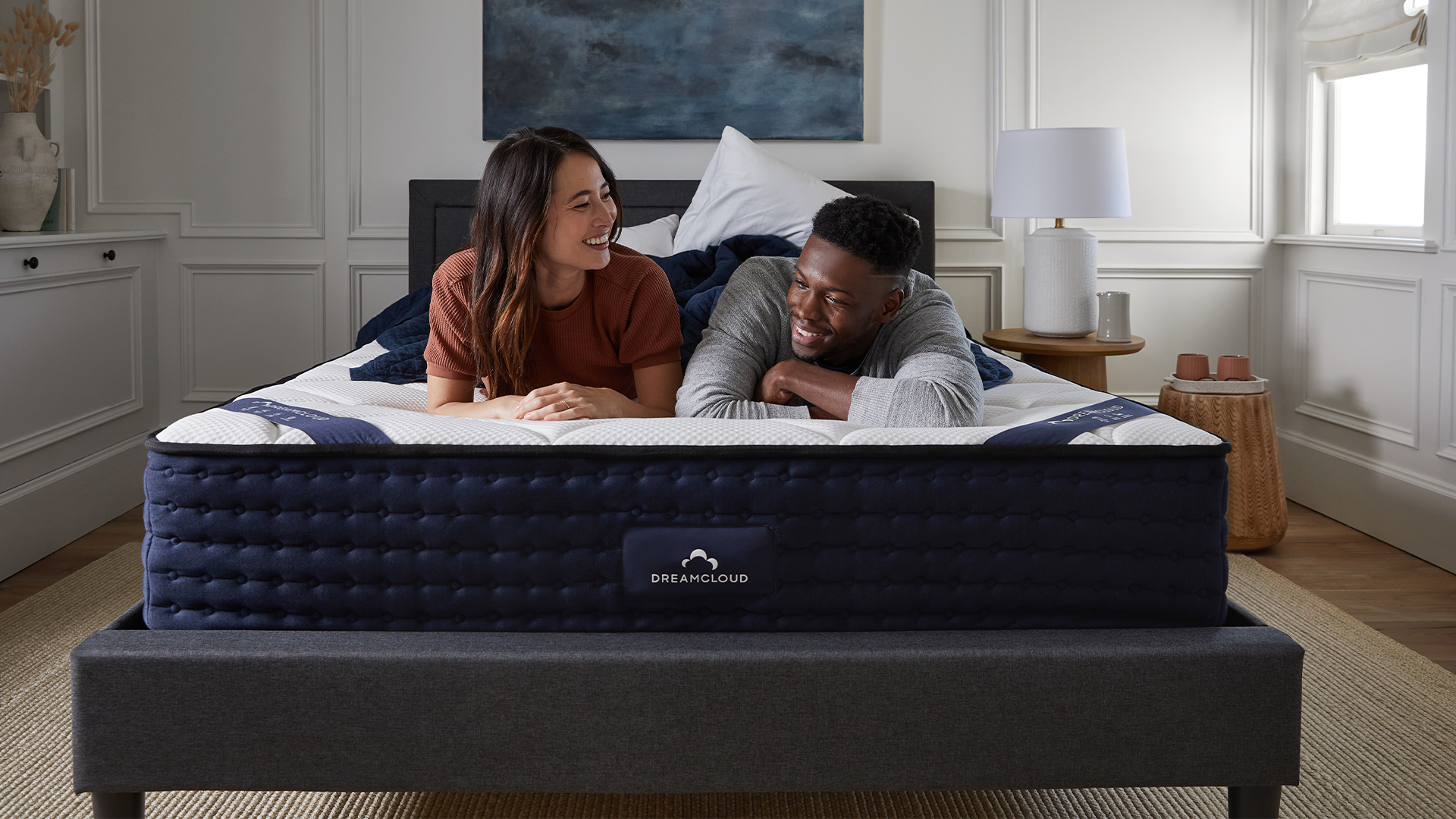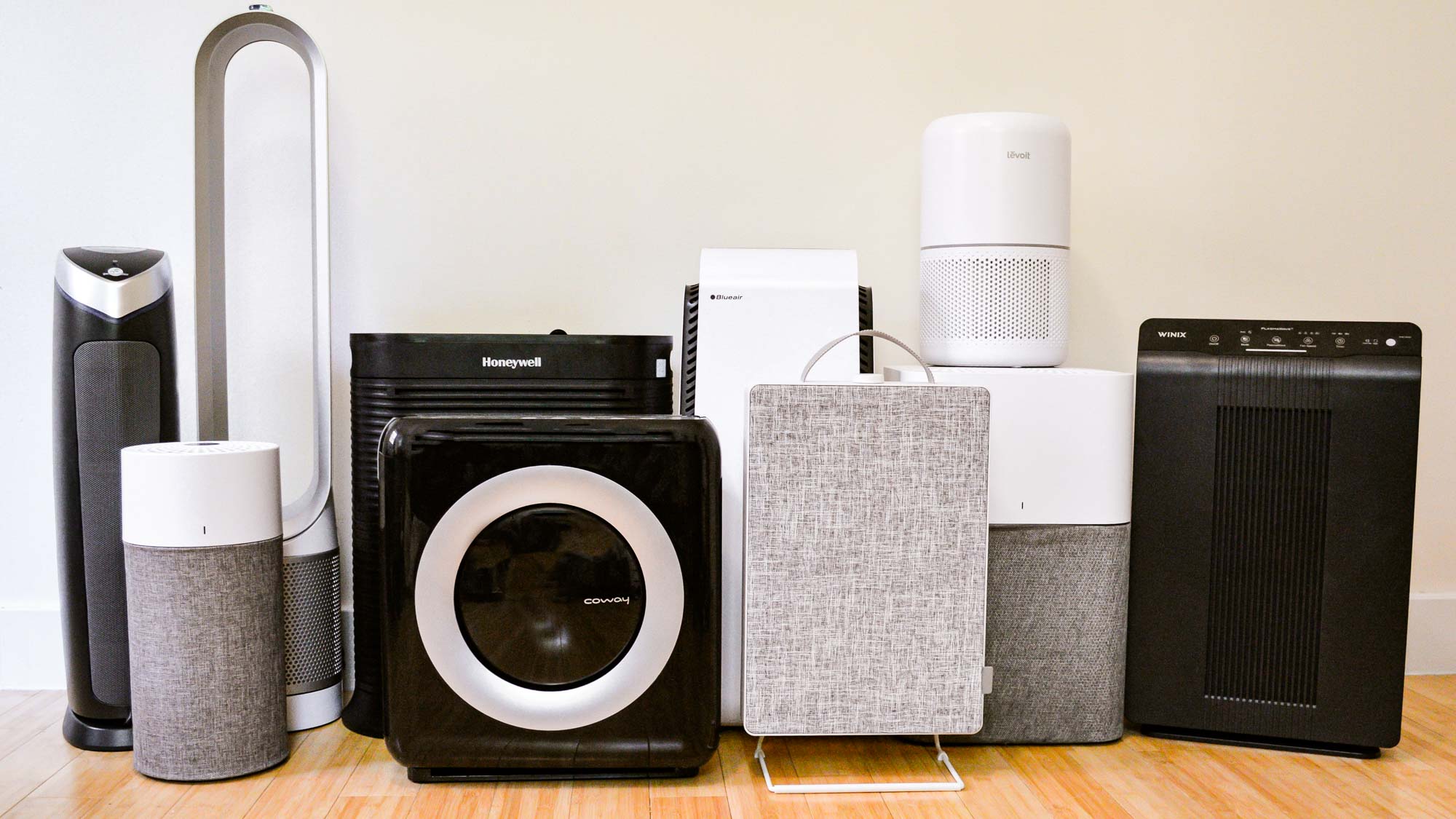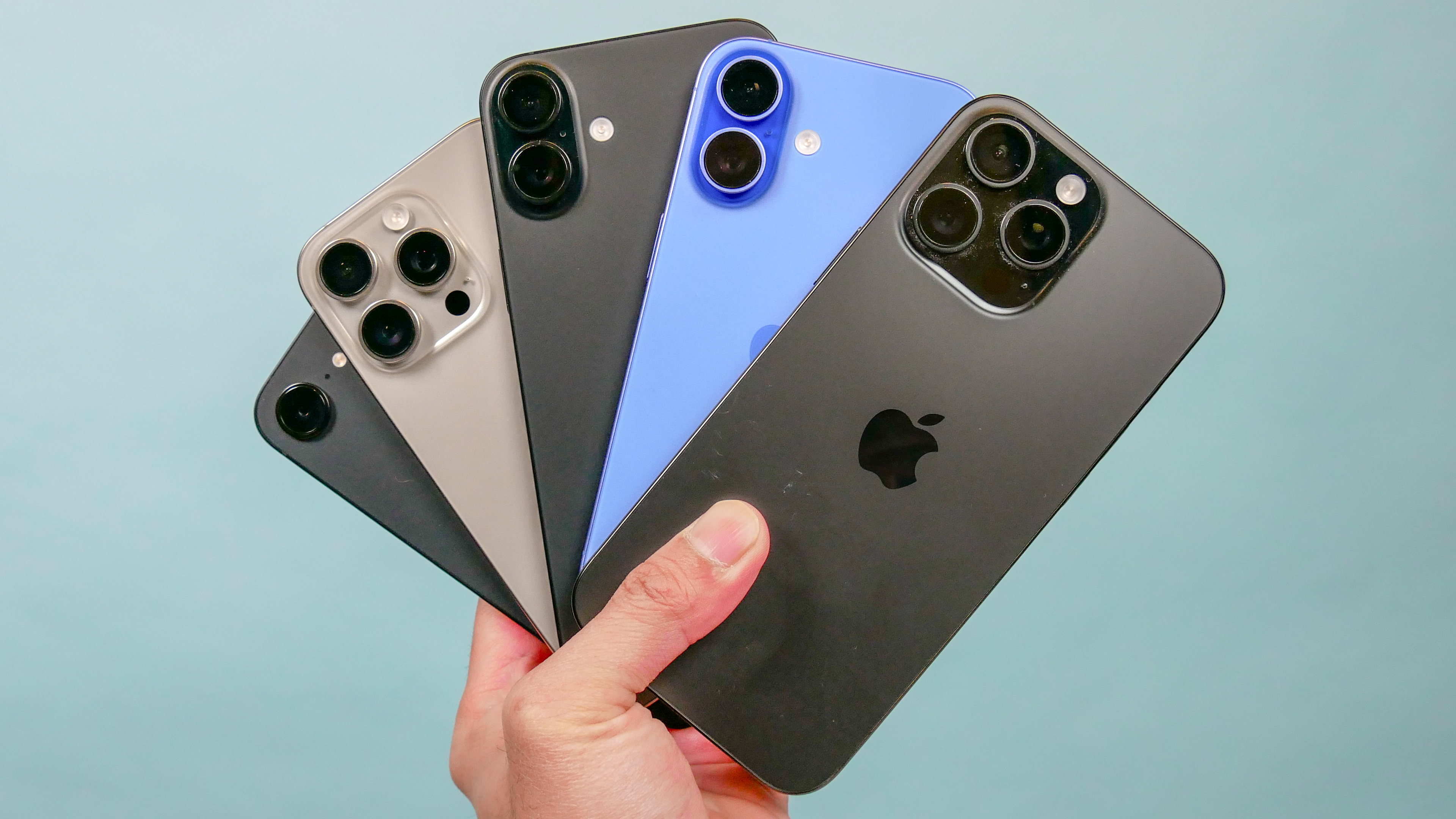Best robot vacuums for pet hair in 2025
If you share a home with furry friends, these are the best robot vacuums to suck up pet hair from every surface
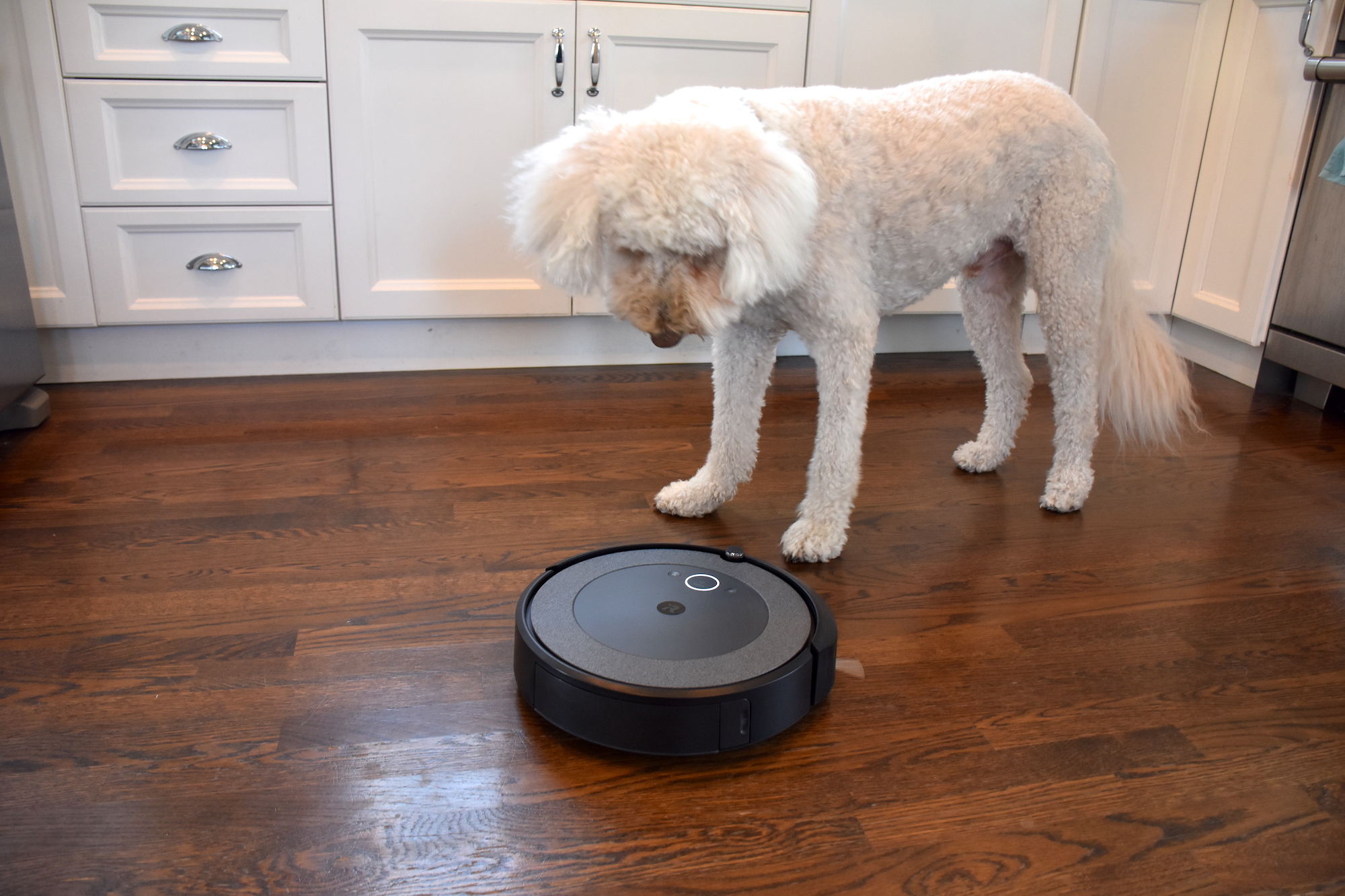
If you're a pet parent, you're probably left with the task of cleaning up a lot of fur. And that's why having one of the best robot vacuums for pet hair can make all the difference in keeping your floors spotless. But how do you know which model is right for you?
Luckily, we've spend countless hours, with the help of our shedding dogs and cats, to test some of the best robot vacuums for pet hair. To do so, we sprinkle our floors — both hardwood and carpet — with 20 grams each of pet hair, and then measured to see which robot vacuum picks up the most.
Our top pick is the Roomba S9+, thanks to the robust iRobot app for advanced automation, durable body design, and nearly perfect score debris pickup. But at $1,099 it's not for everyone. On the other side of the price spectrum, we found that the $150 iLife V3S Pro cleans pet hair like a champ at the cost of smart features.
So if you want to find the right robot vacuum to suit your home (and pets!) here are the best robot vacuums for pet hair to suit every need, lifestyle and budget. .
The quick list
Here’s the best robot vacuums for pet hair you can buy right now based on our testing. Scroll on for our full in-depth reviews.
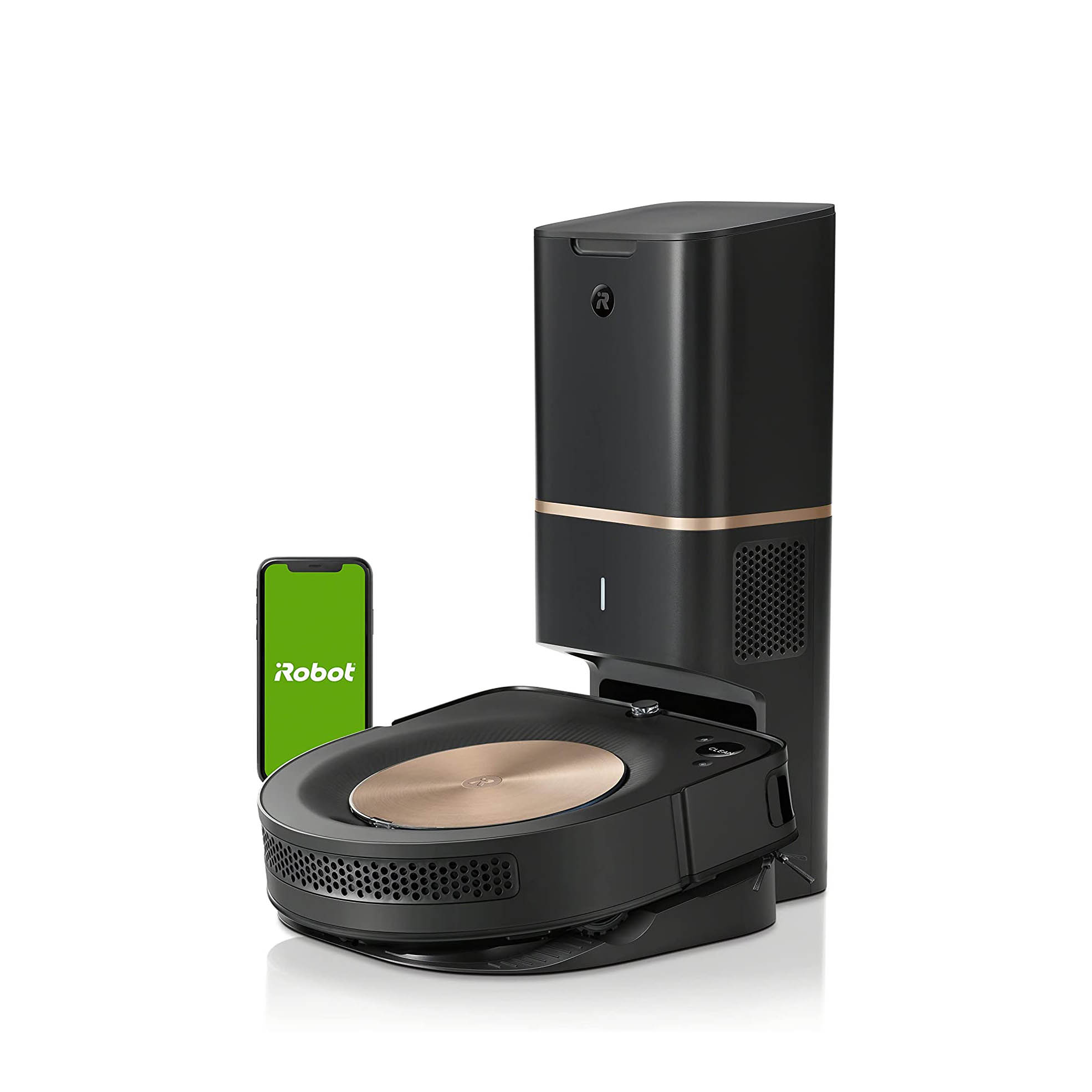
With a self-emptying base, the Roomba s9+ takes care of itself for up to 60 days at a time, sealing debris away into a bag. It excels in cleaning pet hair messes, and the app allows for mapping, scheduling, and no-go zones.
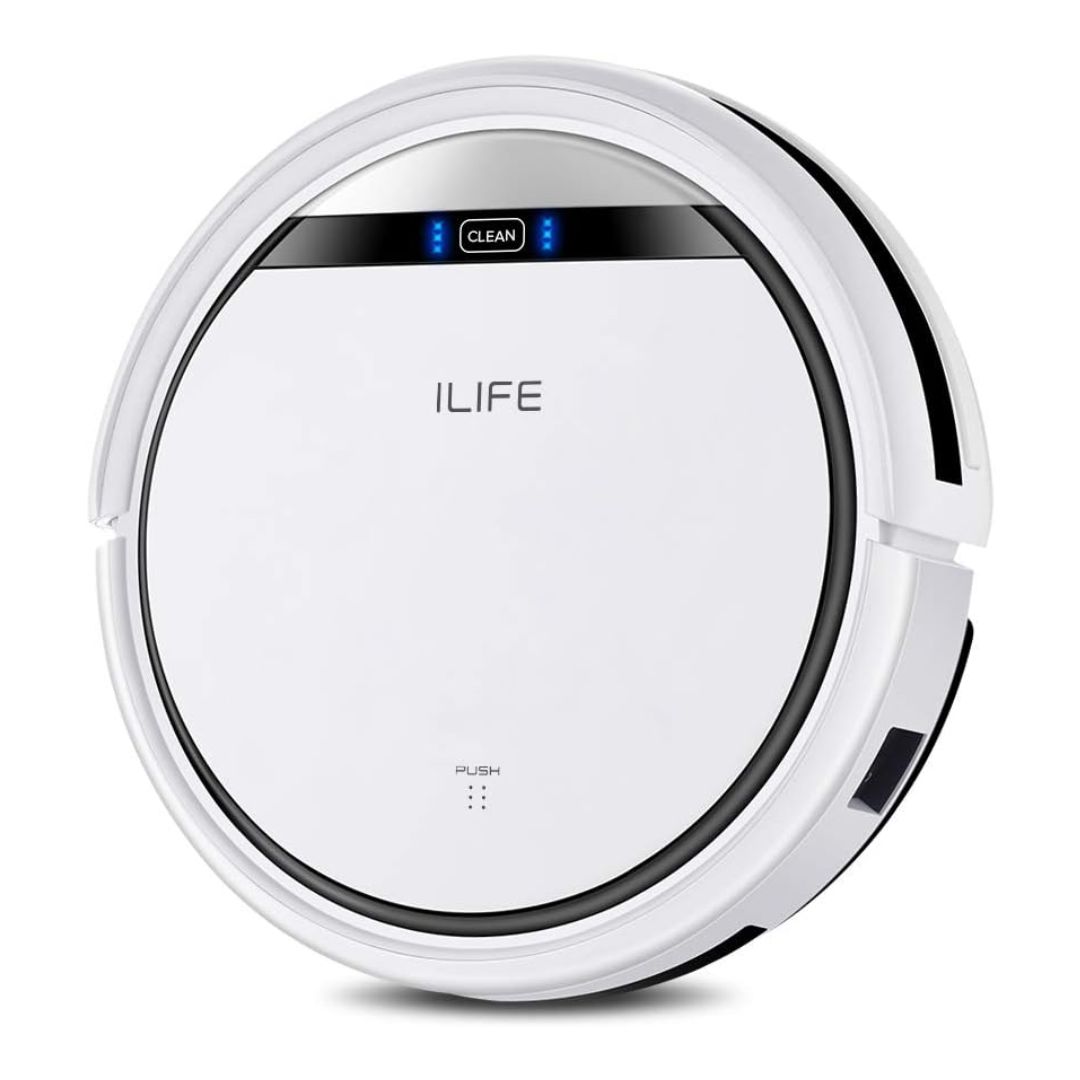
This iLife robot vacuum scored phenomenally high marks for picking up pet hair from both hard floors and carpet, thanks to its open funnel design which filters hair straight into the dustbin. Few others can compete in performance, and it comes in at an affordable price at the cost of smart features.
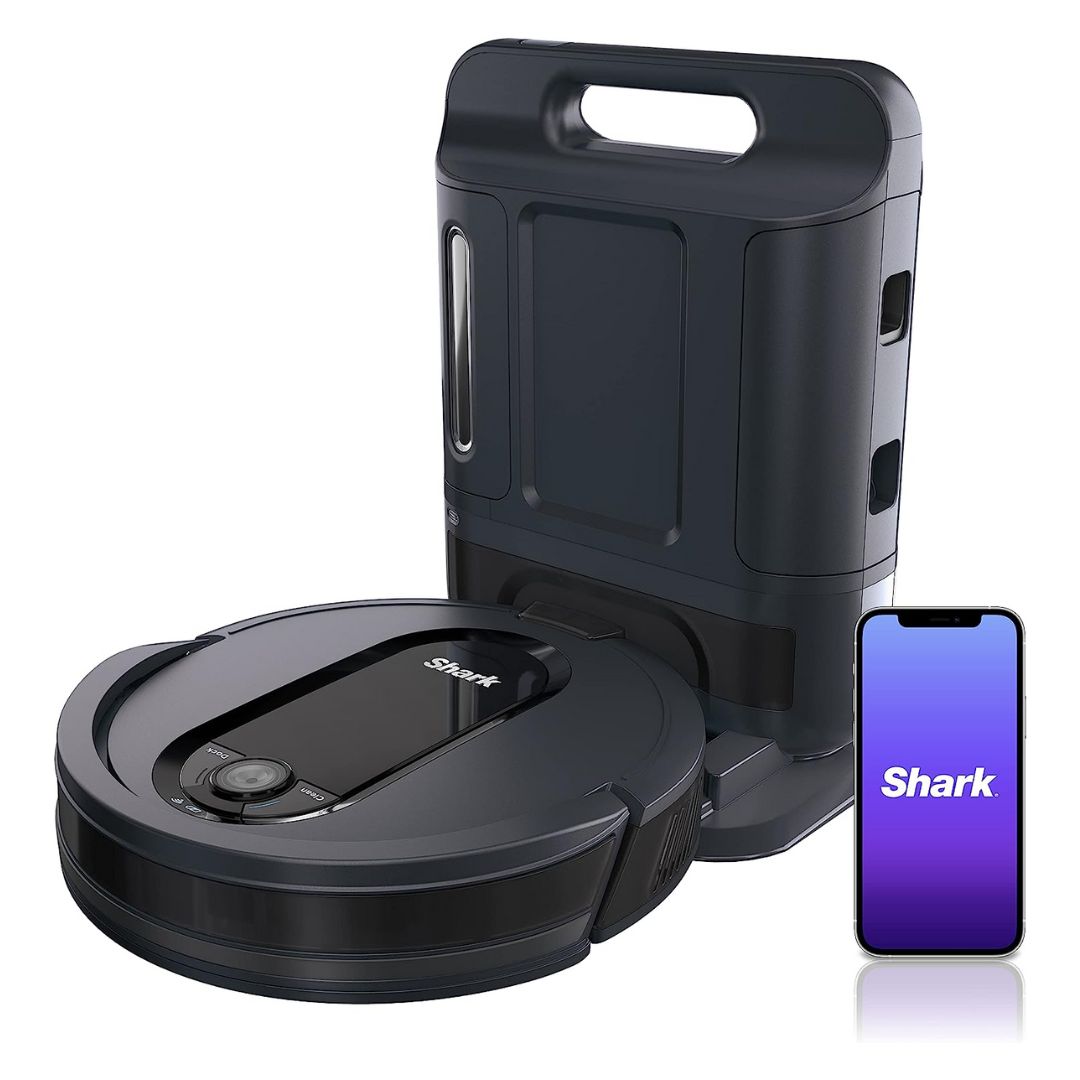
The Shark IQ is loaded with the premium features at an affordable price. It collected 100% of pet hair from hardwood floors and 97% from carpet.
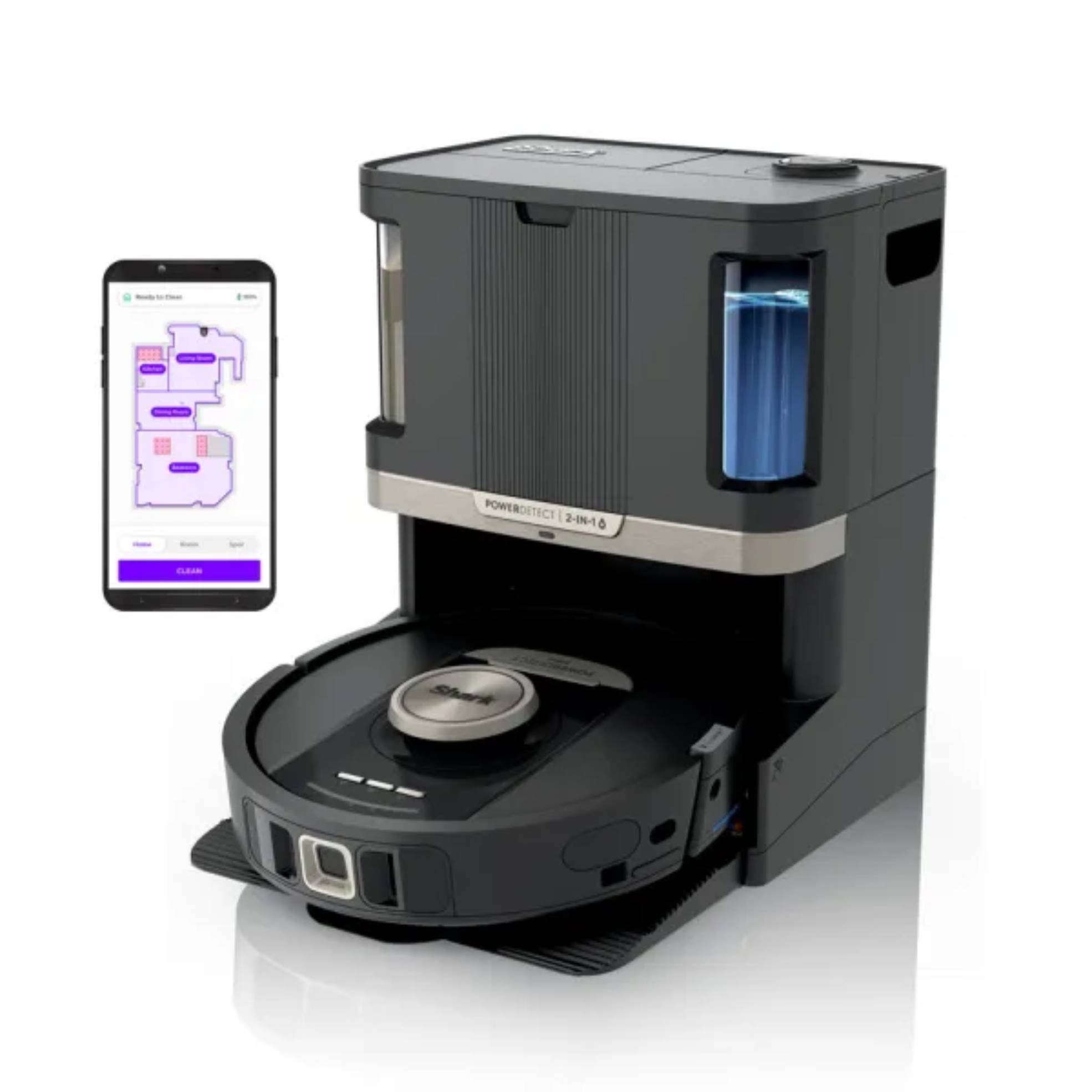
This model not only excels at picking up pet hair — it vacuumed up 95% on hardwood and 90% on carpets — but also did a great job mopping our floors, and even cleans itself.
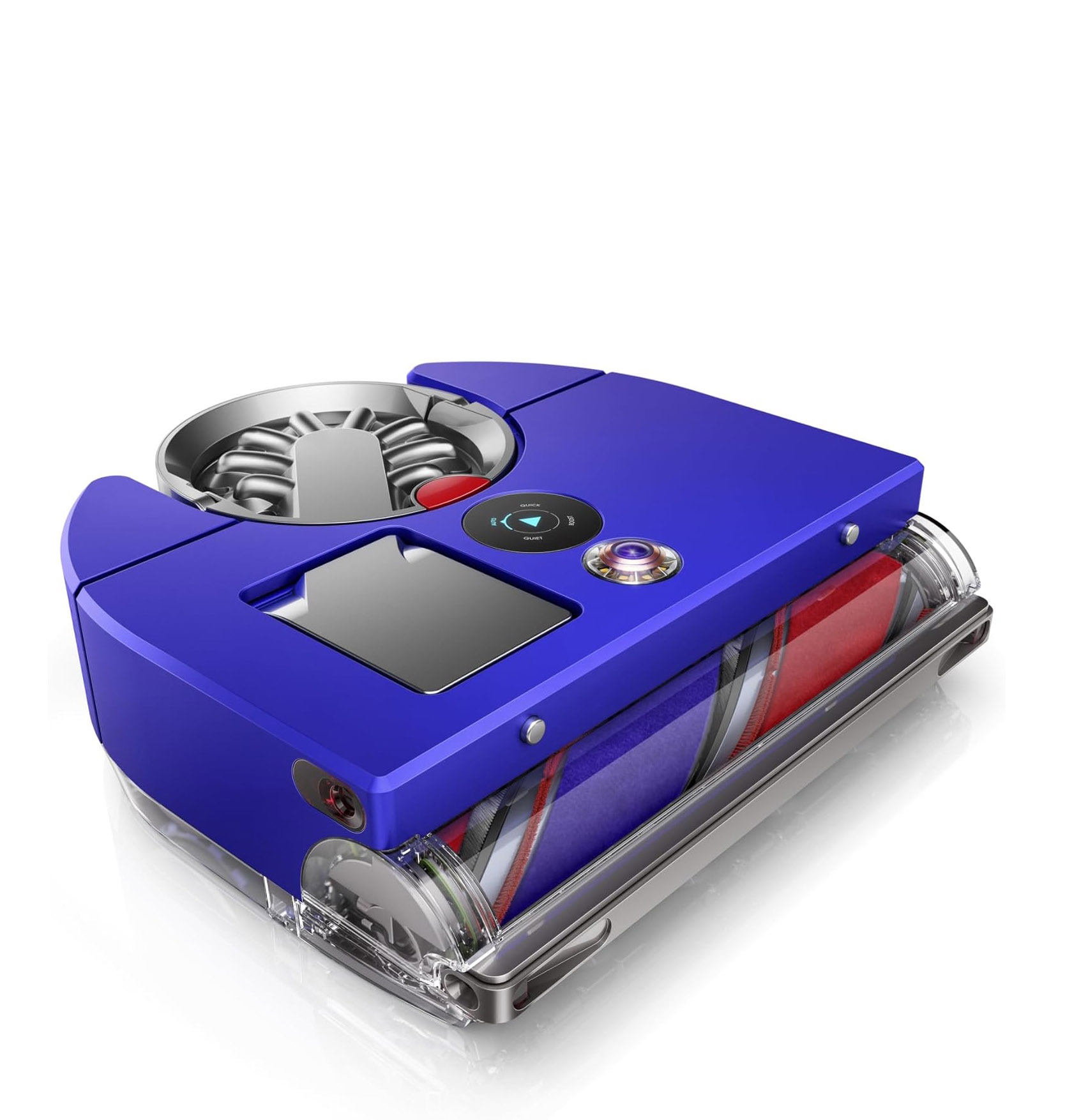
Thanks to its D-shaped design, the Dyson 360 Vis Nav has great reach against baseboards and into corners. It’s quiet and fast and provides a strong cleaning performance when pitted against Cheerios, kitty litter, and pet hair, removing 91% of debris overall in our tests.
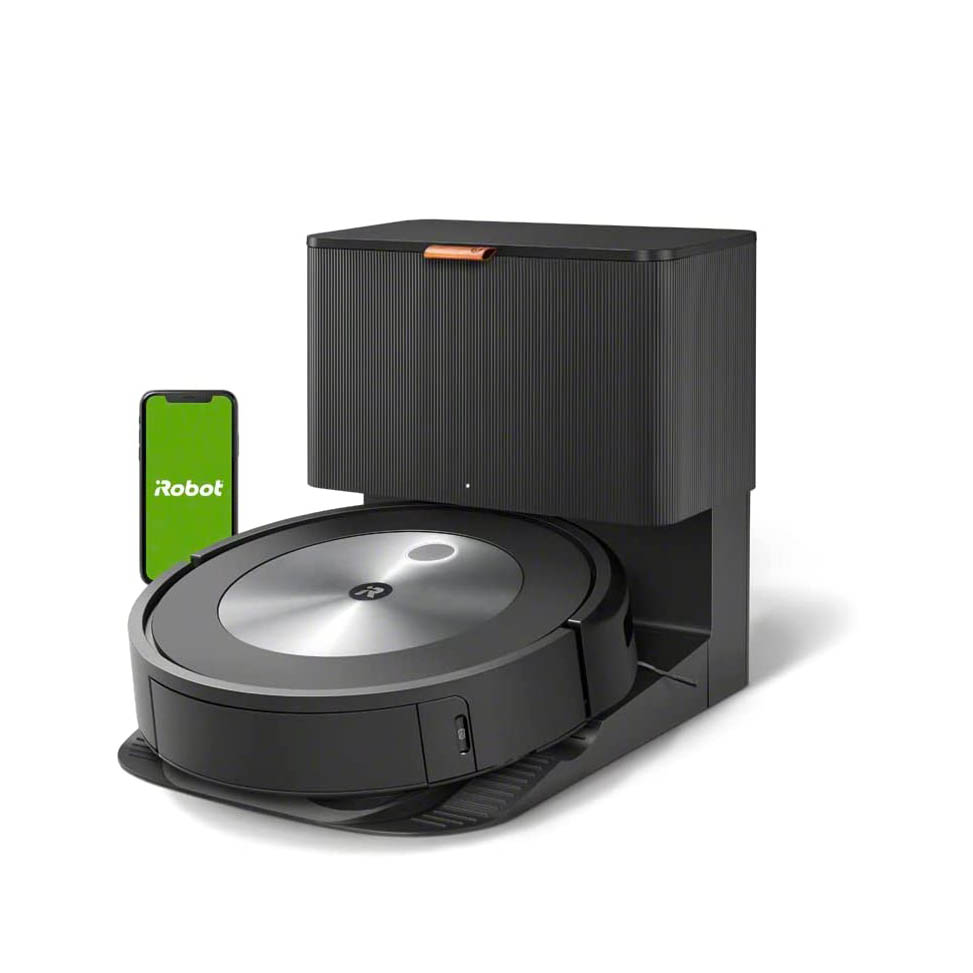
The Roomba j7+ features object recognition and learns from what it encounters. That means you don’t need to worry about pet poop collisions. However, it didn't fare as well as others when picking up pet hair on carpets.
Meet our testers

As the Homes Content Editor for Tom's Guide, Cynthia has made it her mission for us all to have cleaner homes (and air!), without the fuss. She has a wealth of experience testing various appliances, and cleaning hacks. From finding the best vacuums, and robot vacs, to wet and dry mops, she probably has one of the most spotless homes around.

Hunter Fenollol was former Smart Home editor and specializes in smart home gadgets and appliances with a focus in robot vacuums and security cameras.

Meghan McDonough has been testing robot vacuums for Tom's Guide since 2019. Since 2008, she’s written about laptops, mobile phones, headphones, speakers, and other consumer tech.
Meghan's dog, Scout, features in this guide and also known as the Incredible Shedding Test Dog.
The best robot vacuums for pet hair you can buy
Why you can trust Tom's Guide
Best overall



Specifications
Reasons to buy
Reasons to avoid
We understand that it's a pricey robot vacuum, but the Roomba s9+ will clean up all of your pet's hair and avoid poop effortlessly. It picked up 98% of pet hair on average across carpet and hardwood floors, plus it automatically empties its dustbin after each job so you don't have to deal with allergens like dander. This best-in-class performance and self-emptying Clean Base stands head and shoulders above the other options to make it our top pick.
A disposal bag inside of the Clean Base neatly ties itself when it’s time to remove the full bag. Replacement vacuum bags can be bought online in packs from 10 up to 20, and can start from $16. It’s better than dumping the robot’s dustbin into your kitchen garbage can, and our tester found there was a lot less dust in the air when compared to the bagless disposal base on the Shark IQ. If allergies are a prime concern of yours, be sure to also check out the best air purifiers.
But stopping pet hair and dust from recirculating in your home isn’t the Roomba s9+’s only trick. This Wi-Fi-connected robot vacuum can be commanded by its accompanying app, iRobot Home, to clean specific areas of your home, such as the area around the kitchen table, and avoid others. For instance, we asked it to avoid a tester's dog's food bowl, and it did so successfully.
Don’t need that much granularity? Tell the s9+ to clean the whole kitchen at 8:30 every night. Want to come home to a clean home? The s9+ can be triggered via geofencing: For example when you leave home to walk the dog, you can use this as a trigger to have the vacuum start cleaning. Come home and choose to have the vac continue the job or head back to the base, making it an excellent feature for households with pups who fear vacuums.
Read our full iRobot Roomba S9+ review.
iRobot Roomba s9+ test results
| Header Cell - Column 0 | Overall | Cheerios | Kitty Litter | Pet Hair |
|---|---|---|---|---|
Hardwood Floor | 96.3 | 90 | 100 | 99 |
Carpet | 97.3 | 95 | 100 | 97 |
Best budget




Specifications
Reasons to buy
Reasons to avoid
One of the best cheap robot vacuums available happens to also be one of the best for tackling pet hair. The inexpensive iLife V3s Pro is light on bells and whistles but big on keeping your floors free from fur. In fact, it collected nearly 100% of pet fur from hardwood floors and carpet when we tested it — which is an almost perfect score. This bump-and-clean robot sets itself apart with a 3-inch suction opening instead of a brush roll for ingesting debris. Not only does that aid in picking up dog hair, but it also makes maintenance easier since you won’t need to spend time removing hair from a brush roll.
It excelled at collecting everyday debris as well, vacuuming up small, flaky bits of onion skin that had collected against baseboards and thick breadcrumbs as it carefully and precisely worked its way around kitchen furniture. The iLife V3s Pro really shines on bare surfaces, such as hardwood floors and tile, though it works well on carpets and thinner rugs, too. So, it would work best in a home with predominantly hard floors.
The random cleaning pattern of the V3s Pro means it might miss a few spots or, as we found during testing, get fixated on a certain area — our tester couldn't keep it away from the foyer or beneath the couch. Thankfully, there are arrow buttons on the included remote control to guide the V3s Pro back towards the dirt. If you’re okay with providing the iLife V3s Pro a little supervision, this incredible value will serve your floors well.
Read our full iLife V3s Pro review.
iLife V3s Pro test results
| Header Cell - Column 0 | Overall | Cheerios | Kitty Litter | Pet Hair |
|---|---|---|---|---|
Hardwood Floor | 99.8 | 99.4 | 99.9 | 100 |
Carpet | 94.2 | 100 | 83.6 | 99 |
Best value



Specifications
Reasons to buy
Reasons to avoid
The Shark IQ was one of our top scorers for pet hair removal, collecting 100% of fur from hardwood floors, which only the iLife VS3 Pro also achieved. Its performance on carpet was similarly as strong at an impressive 97%. By comparison, the Roborock s7 this replaced had a much lower cleaning performance, with only 85.8% of pet hair removed on average.
The Shark IQ happens to be the only pet hair-effective (over 95 percent) robot vacuum with a self-emptying base for under $400. In terms of price to performance here, the IQ offers a serious value that will deep clean your floors without any intervention for 45 days. You can simply schedule it to clean when everyone's out of the house for work or school.
However, there were some areas for improvement — specifically, the lack of multi-floor mapping. But, if room-specific cleaning isn’t a concern outside of your main level, you can place it down and let it find its away around your basement or upstairs. It comes with four levels of suction power, and getting it set up and running couldn’t be easier. Just keep in mind that the base gets loud when extracting debris from the robot. You won't want to put it next to where your pet eats or sleeps.
Read our full Shark IQ review.
Shark IQ test results
| Header Cell - Column 0 | Overall | Cheerios | Kitty Litter | Pet Hair |
|---|---|---|---|---|
Hardwood Floor | 99.3 | 98 | 99.8 | 100 |
Carpet | 96.6 | 95 | 98.7 | 97 |
Best vacuum and mop




Specifications
Reasons to buy
Reasons to avoid
The Shark PowerDetect 2-in-1 is at the top of our list of the best robot vacuums, but, due to how well it also picked up fur, also earns a spot here as the best robot vacuum and mop. With an overall pet pickup score of 93% on our tests, it wasn't quite as good as the Roomba S9+, but it's still among the leaders in this category.
Similar to the S9+, the Shark works with a self-empyting base, only it's used for both vacuuming and mopping. It's got enough storage for up to 30 days of debris, which goes up to 60 days if you're using the vacuum alone.
The Shark's LiDAR system quickly scanned our home and created accurate maps of our rooms, and then went right to work, picking up pretty much everything it came across. Its obstacle-avoidance technology was also very effective, missing everything except for a single thin 6-foot USB-C cord.
But what we like the most about the Shark PowerDetect is its price: At $899 — which is regularly discounted — it's one of the most affordable robot vacuum and mopping combos that we actually would trust to clean our house.
Read our full Shark PowerDetect 2-in-1 review.
Shark PowerDetect 2-in-1 Combo test results (out of 100)
| Header Cell - Column 0 | Overall | Cheerios | Kitty Litter | Pet Hair |
|---|---|---|---|---|
Hardwood Floor | 98.3 | 100 | 99.9 | 95 |
Carpet | 90.9 | 99.6 | 83 | 90 |
Best for cleaning baseboards



Specifications
Reasons to buy
Reasons to avoid
Dyson's 360 Vis Nav puts up a solid cleaning performance across the board, scoring a respectable 92.79 overall on our tests. Regarding pet hair, it picked up 91.5% of dog hair on carpet and 83% on hardwood, which places it above the Roomba j7+.
It’s also a relatively quiet and fast operator, needing just 2 minutes to clean a 5' x 5' space. We like that the dustbin is concealed in the robot's center, making it simple and convenient to access. The filter acts as a door to help keep the dust contained when it comes to removal - ideal if you suffer from allergies and don't want to make a mess. Plus, its D-shaped design has good reach against flat surfaces, such as baseboards. So you don't have to worry about excess fur collecting against your walls.
Our only qualm is the lack of a self-emptying base for the price. Dyson's vacuum is relatively expensive, and swapping out the bin after each job feels cumbersome. Otherwise, this is still one of the better robot vacuums for pet hair that will get the job done.
Read our full Dyson 360 Vis Nav review.
Dyson 360 Vis Nav test results
| Header Cell - Column 0 | Overall | Cheerios | Kitty Litter | Pet Hair |
|---|---|---|---|---|
Hardwood Floor | 99.8 | 88.2 | 96.5 | 82 |
Carpet | 96.2 | 96.5 | 96.2 | 96 |
Best for navigation



Specifications
Reasons to buy
Reasons to avoid
While it wasn’t the strongest performer on pet hair, picking up 82.5% on average, iRobot’s j7+ makes the list because it’s guaranteed to avoid pet poop — its predecessors won't offer such confidence. It uses obstacle avoidance technology to recognize and veer around everyday objects like socks and cables. This robot vacuum is constantly learning with every run too, making it one of the smartest I've seen. In fact, iRobot is so confident in the Roomba j7+’s intelligence that it’s introduced the Pet Owner Official Promise (P.O.O.P), whereby iRobot will replace any j7+ that fails to avoid solid pet waste.
Its general performance wasn’t too shabby either, handling large debris, such as cereal and kitty litter, with ease and achieving an overall cleaning score of 91.81%. Although, it's a far cry from our winning iLife V3s Pro robot vacuum's pet hair performance (99.5%). If you hate to empty your robot vacuum between runs, the j7+ model comes with a compact cleaning base as well, which can store up to 60 days of dust. So, this robot vacuum might not be best if your pet constantly sheds, but if there’s an occasional accident on your floor, you will be grateful for the j7+’s intelligence.
Replacement Roomba vacuum bags can be bought online in packs of 10 to 20 and start at $16.
Read our full iRobot Roomba j7+ review.
iRobot Roomba j7+ test results
| Header Cell - Column 0 | Overall | Cheerios | Kitty Litter | Pet Hair |
|---|---|---|---|---|
Hardwood Floor | 94.8 | 97.3 | 94.5 | 92.5 |
Carpet | 88.9 | 99.4 | 94.8 | 72.5 |
Also tested
While we put plenty of robot vacuums for pet hair through extensive testing, not every model made the final cut, despite doing a decent job.
However, if you're still looking for an alternative to suit your needs or budget, check out our other options below.
The Deebot X8 Pro Omni is an impressive robot vacuum and mop, that gave a first-class cleaning performance on carpet and hard floors. The only disappointment was its pet hair pick up wasn't as thorough. However, you'll love the convenience and all the mod-cons.
Read the full Ecovacs Deebot X8 Pro Omni review.
How we tested
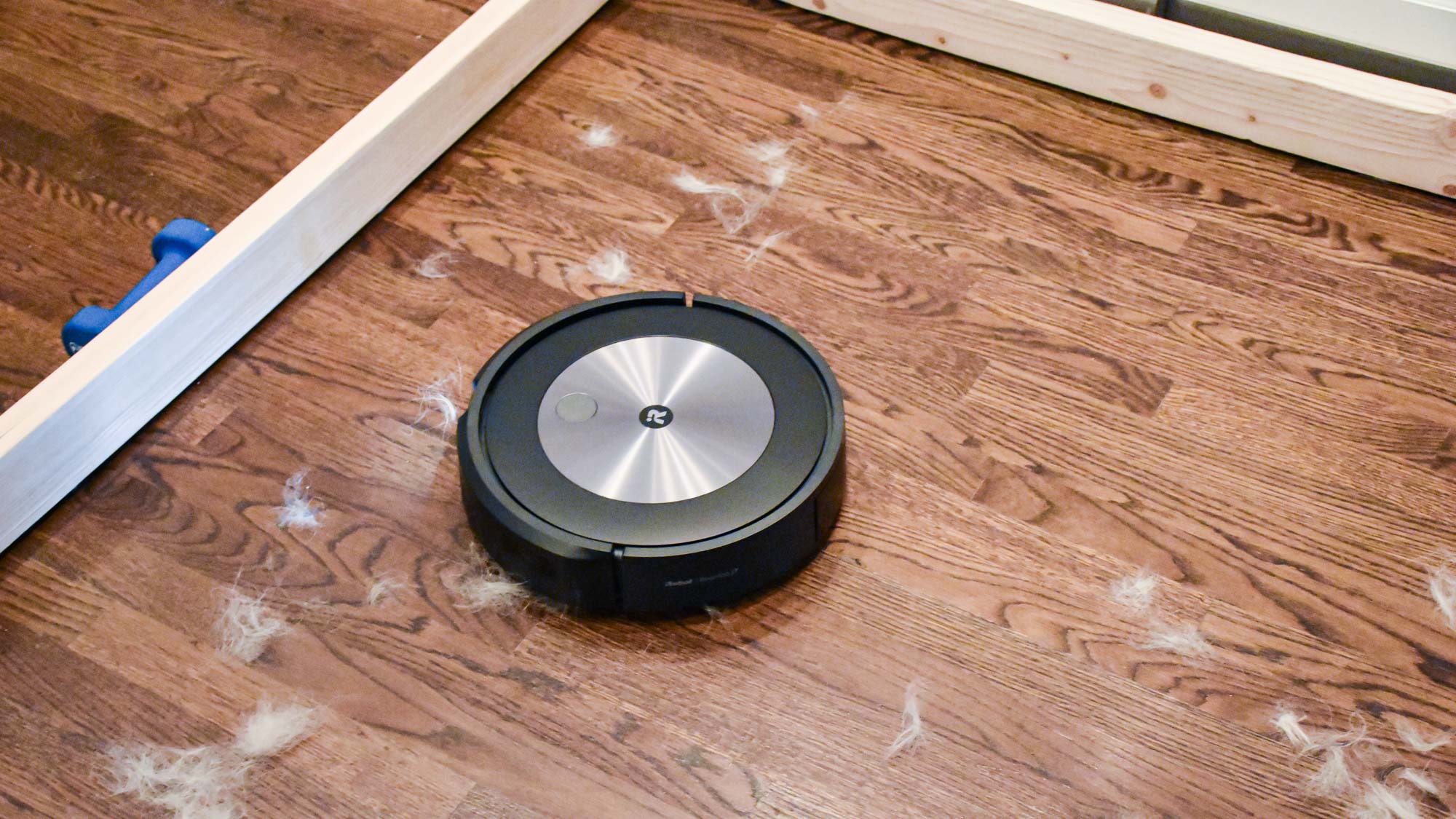
All of the robot vacuums we review are subjected to both our lab tests and in-home, real world use over several days.
For our tests, we sprinkled an area of flooring with 20 grams each of pet hair — on both hardwood and carpet. We then ran the robot vacuum in this area to measure which robot vacuum picks up the most.
The test results, user experience, price, and features relative to competing models weigh into our overall star rating.
In evaluating the best robot vacuums for pet hair, we primarily chose them based on their scores in our pet hair pick up lab tests.
The lab tests are three separate tests run twice – once on hardwood and once on low-pile carpet. In a 5-foot-by-5-foot area, we measure how effective each vacuum is at picking up 2 grams of dog hair (primarily sourced from an English Cream Golden Retriever), 20 grams of kitty litter, and 20 grams of Cheerios cereal. As long as the dog hair is collected by some part of the robot vacuum, such as the side brush or main brush roll, it’s counted. Older models were subject to the same tests but in a larger 15-foot-by-15-foot area. These three types of debris are used because they represent different particle sizes and challenges a robot vacuum will likely face.
Real world testing isn’t as rigid as our lab tests, though we test all of the features in each vacuum. Most commonly, this includes mapping out the first floor of the reviewer’s home and evaluating it for accuracy. This also includes how easy or hard it is to make map adjustments, such as room divisions and drawing no-go zones. Our reviewer looks at the dustbin: Is it hard to access? How much force is needed to open the dustbin? Does dust go flying everywhere? How easy is it to clean the brush roll, side brush, and wheels?
Household terrain is also considered. Does the robot vacuum get caught up on small rugs? Is it able to cross a common threshold? Does it get stuck in a maze of dining room chairs? How about under the couch? These are just some of the questions our reviewer answers when evaluating each robot vacuum.
How to choose
You need to consider a few factors before investing in a robot vacuum for you and your pets. First of all, think about how many pets are in your home and how much are they actually shedding. Is it long fur or short fur and are they shedding on a regular basis? You should also consider if you want the robot vacuum to help with other cleaning needs, such as mopping.
Price is also going to be an important aspect. But, don’t go for the cheapest straight away. While the iLife VS3 Pro comes at a very reasonable price, it doesn’t offer any advanced features such as app connectivity, mapping or no-go zones. Whereas, at $349, the Neato D4 can do all of these things. You need to balance what features you want with your budget.

Allergies need to be considered too. If someone struggles with allergies at home, then a self-emptying robot vacuum might be the best option. It stops dust from being released into the air as regularly. Whichever type you go for, here are six robot vacuum tips and tricks so you can get the most out of your robot.
Some cats and dogs are terrified of robot vacuum cleaners. The noise and the movement, particularly as they drive towards your pet, can no doubt cause nerves. If your pet is new to robot vacuums, try introducing them slowly, running the bot for a few minutes to start with, until they’re used to each other!
One final note, if your pet tends to have bathroom-related accidents around the home, be sure to clean it up before your robot vacuum finds it. It will only make further mess and can even break your vacuum, so keep an eye on this.
Features to look out for
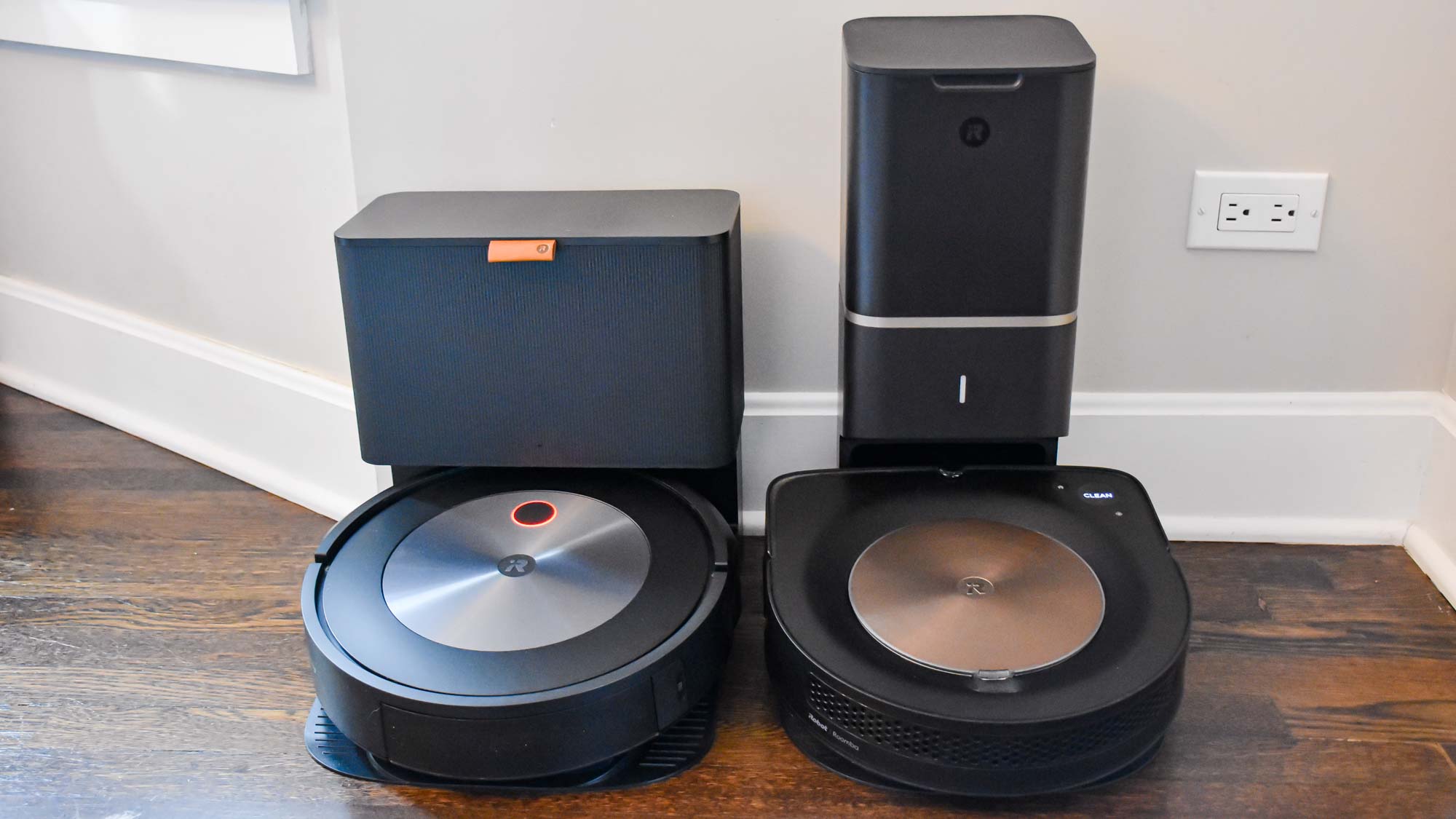
- Suction
It's important to consider suction power, as this will determine how thorough your cleaning results will be. Ideally, a decent robot vac should have a suction power of at least 5,000pa to be able to handle pet hair and dander with ease. - Self-emptying
You can find this feature on some of the more premium models, such as the iRobot Roomba s9+ mentioned above. Essentially, the robot vacuum will empty itself into a larger dustbin in the charging base once it’s full, saving you from emptying it as much. This is a great feature to have if you suffer from allergies as dust isn’t released into the air as often. If you want to know more, check out our guide on whether robot vacuums with self-emptying bases are worth it. - Wi-Fi connectivity
This is quite a common feature to find on robot vacuums nowadays. It means your robot vacuum can connect to your smartphone via Wi-Fi. In doing this, you can control and monitor it remotely and this also gives you access to an assortment of features, depending on your model. - Hybrid models
There are hybrid models available which can both vacuum and mop such as the Shark PowerDetect 2-in-1 . In our experience, these aren’t as good as dedicated robot vacuums in terms of pick-up. So if you’re dealing with pet hair, stick to a standard robot vacuum for sure. Although, if you want a model tath avoided dog messes you might want to invest in the iRobot Roomba j7+.This came up tops for excellent avoidance abilities. - Mapping
With this feature, a robot vacuum can map-out your home by feeling its way around with sensors during setup. They can then tell where any obstacles are, such as table legs or the stairs. Using the map, the robot vacuum will then plot the best course for cleaning, rather than moving randomly. If you want to make sure your baseboards are spotless, the Dyson 360 Vis Nav has edge-to-edge cleaning. - No-go zones
This comes with models which offer mapping. You can essentially set areas where you don’t want it to go, such as around the pet’s food bowls or around an expensive rug. - Targeted rooms
This is the opposite of no-go zones, where you can set which areas you would like the robot vacuum to focus on. - Multiple floors
Some robot vacuums can only store one map, which is frustrating if you need it to work on more than one floor. That’s why they’ve now introduced models which can record maps for multiple floors. - Scheduling
This is one of the most common features you will find for robot vacuum cleaners. Once you’ve connected the model to your smartphone, you can schedule when you would like it to clean, whether daily, weekly or when you’re not at home. - Remote control
If your robot vacuum cleaner doesn’t connect to the Wi-Fi, it might come with a remote control instead. You won’t get as many features on this versus an app, but you can still control your robot vacuum hands-free. - Battery life
Make sure you consider the battery life of your potential robot vacuum. If it comes with a base, it can charge itself between runs, but if you need to plug it in manually, it might run out of charge part-way through cleaning. - Dust capacity
A smaller dustbin will need emptying more often, unless you’re lucky enough to own a self-emptying model! Look for a minimum of 400ml capacity for guidance.
Robot vacuum FAQs
Is a robot vacuum worth it for pet hair?
Pet hair is arguably one of the toughest types of debris to collect from your floors. This is because the fibers actually cling to the carpet, and this is made all the worse by regular footfall. It essentially gets knotted into the pile and requires not just a powerful vacuum, but an effective rotating brush bar to agitate and remove it. For this reason, even upright corded vacuums can struggle when it comes to pet hair.
While pet hair is easier to collect from hard floors because it can’t get embedded, it can still cause problems. The fur can end up jamming the brush bar, which prevents the vacuum from picking up further debris. So whatever type of floors you have, pet hair can be a tough customer.
Of course, robot vacuums don’t tend to provide as strong a performance as upright vacuum cleaners, so this makes the capabilities on pet hair questionable from the start. However, as our tests show, some robot vacuums excel in this field, thanks to a specialized design and an optimum pick up rate. These are less common than we would like, but they do exist, and there are even models available which perform well across the board, picking up dust, crumbs and pet hair with ease. Whatever you do, don’t choose a model based on claims around pet hair removal alone — confirm its performance where possible, which is where our tests will help you out.
Vacuuming is one of the 7 ways to remove pet odor from your home.
How much should you spend on a robot vacuum?
While you need to find a robot vacuum which excels in this type of debris, that doesn’t necessarily mean you need to break the bank. One of our top performers costs less than $200, so you can find a pet hair appropriate option even if you're shopping on a budget.
Robot vacuums range from about $150 up to a whopping $1,400, so it’s essential that you have a budget in mind before you start browsing. Consider exactly what you want from your robot vacuum — don’t be tempted by expensive features unless you intend to use them. Once you know what you’re looking for, this should help scale down the options and prevent you from overspending.
Sign up to get the BEST of Tom's Guide direct to your inbox.
Get instant access to breaking news, the hottest reviews, great deals and helpful tips.

As the Homes Content Editor, Cynthia Lawrence covers all things homes, interior decorating, and garden-related. She has a wealth of editorial experience testing the latest, ‘must-have’ home appliances, writing buying guides and the handy ‘how to’ features.
Her work has been published in various titles including, T3, Top Ten Reviews, Ideal Home, Real Homes, Livingetc. and House Beautiful, amongst many.
With a rather unhealthy obsession for all things homes and interiors, she also has an interior design blog for style inspiration and savvy storage solutions (get rid of that clutter!). When she’s not testing cool products, she’ll be searching online for more decor ideas to spruce up her family home or looking for a great bargain!
- Meghan McDonough
- Hunter FenollolSenior Editor, Smart Home
